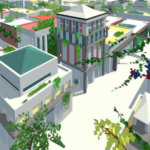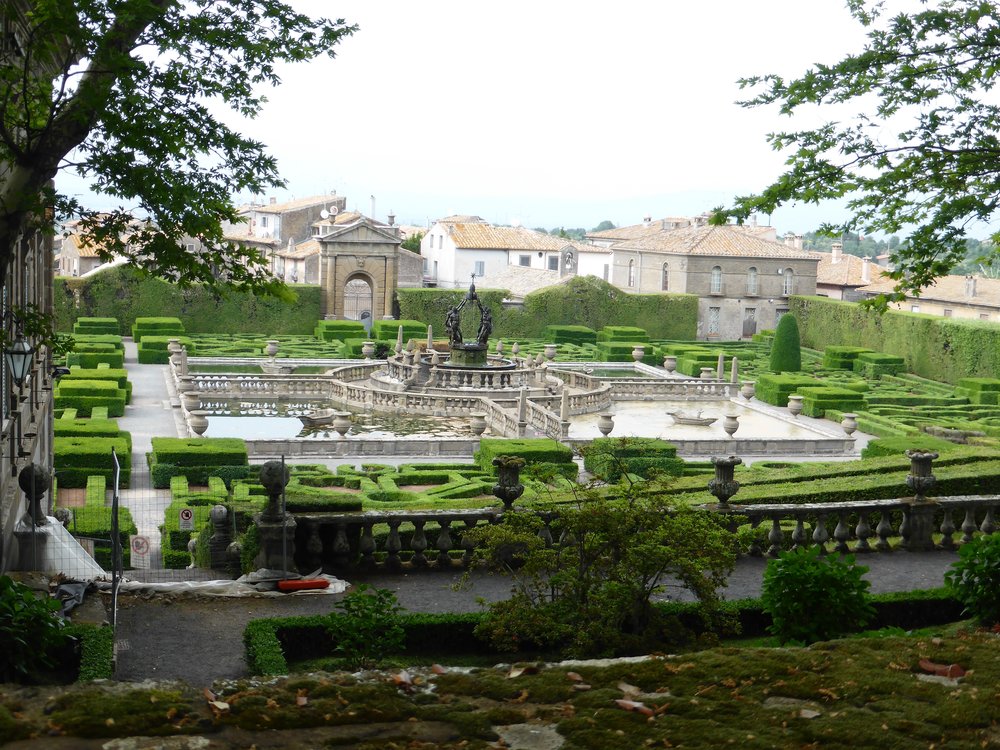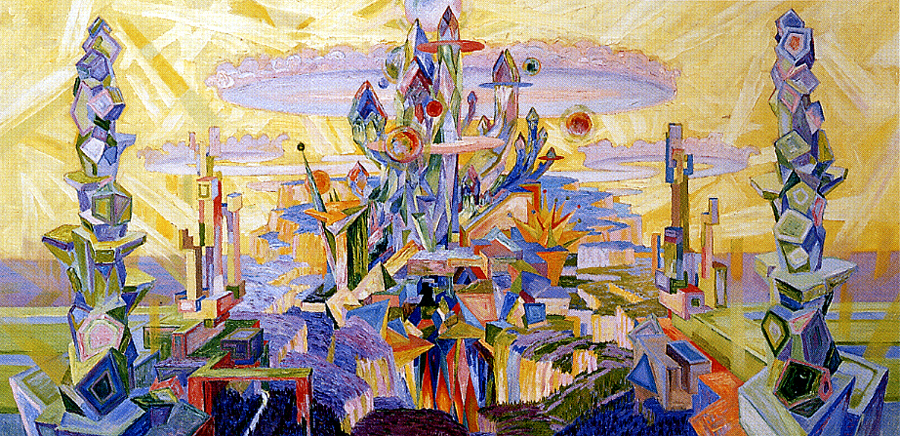
The Worlds in the Arcades
Ulrich GehmannAs had been said in the beginning, these are the worlds to assist the main ones shown in the triptych. They orchestrate the worlds shown in that center of a theatrum mundi, presented as standstill images of other worlds; they aim to orchestrate the ones shown in the triptych, whereby each of those triptych- or “main” worlds has its associated standstills particularly suited to it. As the Renaissance humanist, mathematician and architect Alberti has it, the spaces shown in the arcades are windows to worlds of their own. Like the spaces of the main worlds shown in the triptych, we see in the arcades just sectors of much bigger entities, other “worlds” these sectors are merely a part of.
In their language of forms and their character, the spaces presented in the arcades are similar to those shown in the triptych. When we take the respective spaces in the triptych and in the arcades together, they constitute an ensemble, a unity of form, shape and expression, each ensemble revealing certain mind sets that led to specific spatial constructions related to those “sets” or world views. So, the common mythosunderlying all those constructions, namely to construct a second nature that is more natural than an original nature could ever be.
In this way, the visitor has to look at such an ensemble as unity, raising the imaginative powers of conceiving all these worlds as an inherent perceptual as well as symbolic whole.
The arcades themselves are symbolic, having been derived from one of the very first Renaissance buildings, the Ospedale degli Innocenti of Brunelleschi in Florence. In the manner of a central perspective, they embody the sides of a theatrum mundidirecting the view towards its center, the triptych.
The first triptych world, Paradise, has as companions a quite early attempt to create an almost complete virtual space, the Roman frescoes of Villa Livia, presenting a garden at the four times of day (morning, noon, evening, night) with each daytime painted at one wall. So, the entire room of that villa is an early example of an “immersive” environment in different perspectives, as are the ones of our triptych.
The second triptych world, the ideal city of Sforzinda, has several orchestrating standstills: on the outer left arcade, you see a recent utopian construction made by the architect Arthur Goldyuk, Israel, offering a city technical in character that could be placed as a module, like Sforzinda, everywhere where it is feasible. The other standstills are from Bruno Taut, showing the cosmic closure of comparable circular spaces as “ideal” entities; and from Ebenezer Howard, from his famous Garden City of Tomorrow at the end of 19th century, presenting the circular scheme of a world-module of a future trying to overcome the hiatus between nature and culture that dominated Western thinking so long.
The third triptych world, the Ibirapuera Park of Roberto Burle Marx located in the midst of the quite unnatural environment, that of a city (Sao Paulo), has other parks as its accompanying standstills: the rich, exuberant artificial nature of a baroque park (Enghien) on the arcades one side, and a Chinese “garden” (in fact, a very large park area) on the other. Although both standstills represent the same type of space in formal terms, namely a park, they are quite different. The Western baroque park intends to be an artificial environment, a ‘nature’ that is no one, and that this very characteristic is visibly expressed; whereas its Chinese equivalent aims at looking like a natural landscape, inviting for contemplation. Despite it too is artificial up to perfection, even the “naturally” looking rocks having been shaped in a process of careful treatment.
Next to the Islamic Gardens placed inside the Terrace World (our fifth space shown in the triptych), we chose an example of another culture for reasons of comparison. Namely how an artificial nature could look like in its two poles: of a pronounced artificiality symbolizing the domination of nature in expressed visibility (the baroque park) on the one hand, and on adapting to natural forms and creating a seemingly natural gestalt on the other. Which reveals two opposite conceptions of how to deal with a natural environment in general, as well as creating an ‘ideal’ one for human beings in particular.
The European or Western approach is emphasised in another series of standstill spaces. They show the park of Villa Lante, Italy, at the end of the 16th century. Here, we see a vista of a park space as a microcosmic world, and its plan altogether with a longitudinal section of the terrain. For Villa Lante, an entire natural terrain was completely transformed, i. e., an artificial space was created in toto, separated from the outer world.

The fourth triptych world, the Garden City of Tel Aviv, is accompanied by futuristic constructions of a water city conceptualised by the architect Michael Burt, Haifa/Israel. In the “Blue Avenue Vision of Burt, a city is imagined that unites several characteristics relevant for our overall topic, artificial natures as new habitats for humans. It is a city that has been located entirely in the sea, like Venice, and not on firm land. In its rather technical style reminding on comparable constructions of the NASA from the 1960s and 70s, a habitat is created completely de novo, and moreover, it has been tried to combine technical functionality, aesthetic demands and nature in a new, and most consequent way. Suited to the Garden City-approach, a technical Venice with lots of green becomes portrayed, providing new homes for thousands of people.
The fifth triptych world, a utopian construction we called Terrace World due to its basic construction principle of two levels of terraces resting on piloti and overlapping with each other, giving space for the development of diverse communities living on them, is accompanied by another utopian scenario called Freedom & Form. Next to a drawing by M. Burt showing terraces of his futuristic world, Freedom & Form (made by U. Gehmann) presents two domains of form, architecture and plants, which at the same time comprise two domains of freedom unfolding themselves. As orchestrating world to the one presented in the terraces, it appears in two forms again: a original, painted version, and digitalized version showing the same world in a more technical perspective (made by vrbn.io).
The sixth triptych world we called the Abstract World, a space which is no real space any longer (neither built, nor constructed) but a system of algorithms making up our today’s Internet “spaces” forming a large part of a nowadays “natural” environment for humans, had to be accompanied by the respective scenarios in the arcades illustrating its very character. For doing so, we considered several possibilities. The best one has been a drawing by Wenzel Hablik from the beginning of 20th century, showing a vision of the final artificial nature of redemption after the end of history, an abstract version of the Heavenly Jerusalem. In its inherent immateriality, rich colouring and abstract style it resembles the colourful and ever-changing Abstract World we present, also a final state of an environment that became natural for us today.

